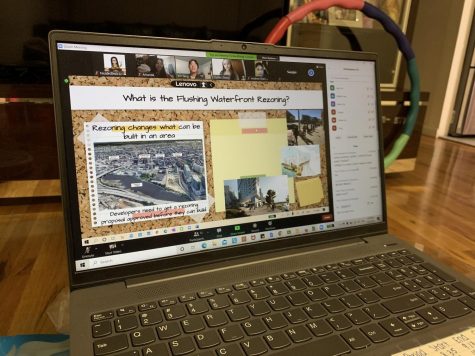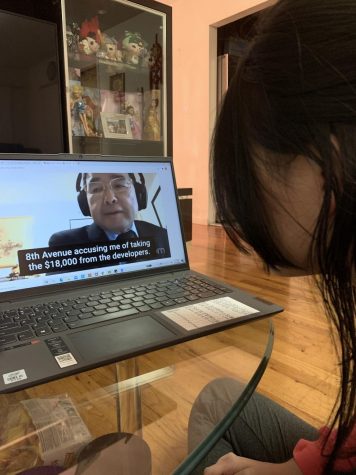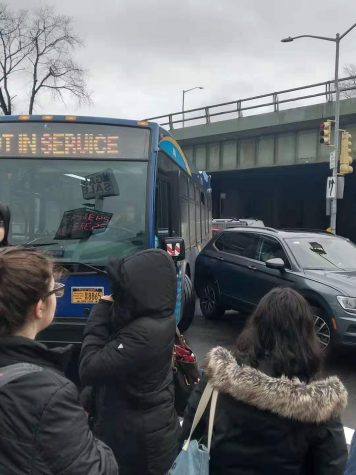A Guide to Displacing the Flushing Community Via Gentrification
A waterfront development is threatening to displace the low income community of Flushing in favor of luxury condos.
Small businesses such as Legend Chicken attempt to bring authentic, Taiwanese street food of quality to Flushing, Queens, a place that the restaurant describes as a ‘food mecca’ for Asian cuisine.
Flushing, Queens, is under attack, and no, this attack is not being led by an angry mob of pigeons trying to get permits to swoop around unsuspecting passerby, nor is this attack going to be led by a SWAT team. Flushing is instead being attacked by an overabundance of shopping malls.
Since 2015, plans to rebuild the neighborhood’s infrastructure have been in the works. Five years prior, the city proposed to rezone the Flushing waterfront, which consists of the area nestled between Roosevelt Avenue, Flushing Creek, Northern and College Point Boulevard. However, the plans were brought to an abrupt halt after Councilmember Peter Koo and his colleagues noted that the tall buildings in the design would block LaGuardia Airport flight paths.
Despite this, in December 2020, a trio of developers, Young Nian Group, F&T Group, and United Construction and Development Group, formed a consortium under the name FWRA LLC to introduce their revised design. For the past year, the plan has been undergoing ‘The Uniform Land Use Review Procedure’ (ULURP), a protocol that all developments under public use need to pass. The main goals of ‘The Flushing Waterfront Rezoning Project’ are to build retail stores, hotels, and about 1,725 new luxury apartments for $1 billion, which will replace the older, less modern homes. The developers claim that this project is necessary because it will lead to affordable housing, open spaces for the public, provide employment opportunities, assist with environmental remediation, and allow for improved street networks in just five short years.
However, the MinKwon Center, a nonprofit organization for community action, disputes these claims, insisting that the promised affordable housing is not truly affordable. Flushing’s demographics show that the median income for a household is $53,165 with more than 14.3% of residents living under the poverty line. A household of four would need to collectively make at least $85,000 annually to afford these new ‘affordable homes,’ far above the median income. To make matters worse, the introduction of luxury apartments would increase the property value and, therefore, the rent of nearby homes, displacing locals and small businesses, resulting in mass gentrification. “They have already made changes to their agenda, increasing the amount of affordable housing from 65 to 200,” says Amanda, a member of MinKwon’s Youth Empowerment Program (YEP), “So based on what we’ve done so far, it means that we can make a bigger impact.”
The second concern the Center raises is environmental safety. The construction area is at high risk of floods and hurricanes, so building sky-high hotels and parking garages would not only be unstable but also costly and difficult to reconstruct after the disasters. Moreover, there is no information available on how the project would affect the already polluted Flushing Waterfront, but it is predicted that congestion would increase dramatically because an additional 3 million square feet would be dedicated towards towers, leading to overcrowding. If the consortium decides not to go through with this development, the funds can be redirected towards parks, youth programs, senior centers, and other community spaces, helping to increase the standard of living in Flushing.
As of now, the rezoning is on stage 4 of ULURP, having received a yes, no, and a yes from the community board, borough president, and city planning commission respectively. However, the first two were only recommendations, lasting 60 days and 30 days each by holding public hearings and suggesting plans on a staff level.
The outcry came from the City Planning Commission hearing, which was initially placed on hold due to the coronavirus, but after a short break, the review proceeded. This was an insult to protesters. Two out of every five Flushing residents do not have internet access and therefore were unable to testify in the virtual court system. The irony stems from the fact that those in need of affordable housing, the ones who will be directly harmed by this development, do not have the opportunity to speak up for themselves. In fact, many residents are unaware of this potential displacement in the first place.
In the coming weeks, there will be a City Council Review and Approval, which is one of the last steps in the process. This is a critical period because if the City Council votes ‘no,’ it will be over. On the other hand, if the plan is approved, it will be forwarded to the Mayor. Yuriko Zhang, an associate of Amanda, put it best: “If it gets to the Mayor, we know he’s going to say ‘yes’ because he isn’t going to oppose the city council.” Both sides have a lot riding on this meeting.

The major players behind the displacement are the mayor, the developers, councilman Peter Koo, Community Board 7, and the landlord lobbyists who want to raise rent prices and loosen regulations. However, the focus is now on the councilmembers, specifically Peter Koo. Through a practice called member deference, the Council usually follows the vote of the councilmember whose district it falls in, which means that Koo has much influence over the outcome. In 2016, he voted ‘no’ after pressure from the community. However, it is important to note that he is pro-policing and pro-landlord; he owns numerous pharmacies and, by going through with this project, he can also reap the benefits.
Recent reports from the NYC Campaign Finance Board show evidence that Koo has accepted campaign money from the developers, which he tried to deny in a virtual council room on December 10th, 2020. This is alarming for the community and members of the MinKwon group since there are clearly many ulterior motives at play.

“Chuck Apelian is one of the leaders on the community board, so he had a huge influence on the vote,” says Yuriko, “But at the same time, he is one of the advisors for the rezoning. While he is the one profiting from the project, he is also the one making the large decisions.” Even though Apelian abstained his vote due to his position, he still encouraged his co-workers to vote in favor of the development. “All of these factors work hand in hand and also at the same time, they have connections with each other, so there’s a lot that’s happening here, but that does not mean that it is impossible for us to fight back.”
Community members claim that the developers are prioritizing profit over the people. In an attempt to increase community support, the developers made fake accounts on Twitter. “One of them is called ‘Flushing Mom’ and it says ‘I support the rezoning with my whole heart,’ but I think that that in itself shows how very sad and pitiful it is,” said Amanda. “They claim a lot of things. We’re going to reduce congestion, we’re going to do this and that, but they don’t provide us with any plausible solutions. Their whole entire argument is that we’re just resisting, but ultimately, there’s just a lack of transparency.”

For many of the residents, it is not the cool recreational centers or the trendy new dessert shops that make Flushing unique. It’s about the people: the small businesses and their stories, the way you can walk into a restaurant without ever needing to speak English, the old ladies who ask about your day, and the way that it provides people, particularly Asians, with a community and home when they need it most. At the end of the day, MinKwon is fighting for a lot more than just affordable housing and reduced congestion. They’re fighting to preserve yet another community that may be lost to gentrification.
“One of them is called ‘Flushing Mom’ and it says ‘I support the rezoning with my whole heart,’ but I think that that in itself shows how very sad and pitiful it is,” said Amanda.
Nicole Zhou is the Editor-in-Chief for ‘The Observatory' yearbook and a Staff Reporter for 'The Science Survey' newspaper. This is her third year revising...











